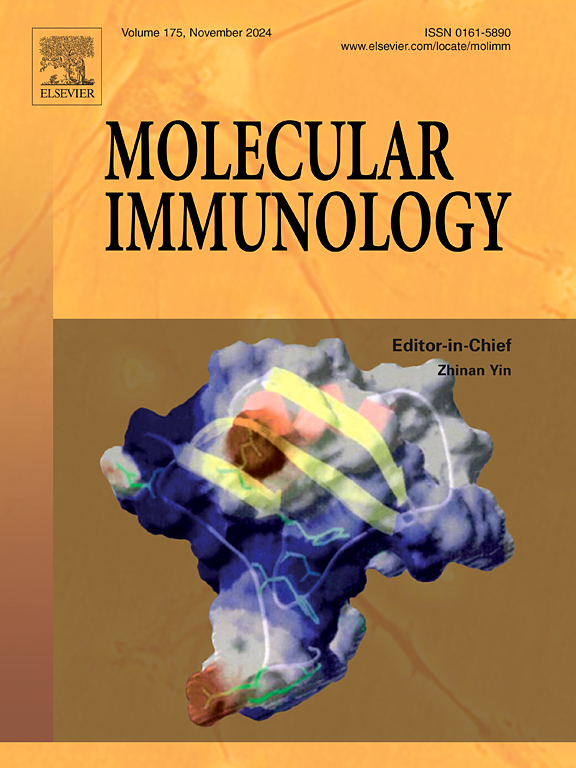C-reactive protein attenuates CCl4-induced acute liver injury by regulating complement system activation
IF 3.2
3区 医学
Q2 BIOCHEMISTRY & MOLECULAR BIOLOGY
引用次数: 0
Abstract
Acute liver injury is liver dysfunction caused by multiple factors without any pre-existing liver disease. C-reactive protein (CRP) is an acute-phase protein produced by hepatocytes, serving as a marker of inflammation and tissue damage. However, its role in CCl4-induced acute liver injury has not been elucidated. Here, we report that CRP protects against CCl4-induced acute liver injury by regulating complement activation. CRP knockout exacerbates CCl4-induced acute liver injury in mice and rats, markedly enhances tissue damage, and reduces survival. Administration of exogenous CRP to CRP-knockout mice rescues the CCl4-induced liver injury phenotype. The protective effect of CRP is independent of its cellular receptor FcγR2b and early metabolic pathways. Instead, CRP suppresses the late-phase amplification of inflammation by inhibiting terminal complement pathway overactivation in injured hepatocytes via factor H recruitment. In complement C3 knockout (C3-/-) mice, the protective effect of CRP against CCl4-induced acute liver injury is lost. These results suggest that CRP can alleviate CCl4-induced acute liver injury by regulating the complement pathway, providing a theoretical basis for CRP's potential involvement and regulation of disease severity.
c反应蛋白通过调节补体系统激活来减轻ccl4诱导的急性肝损伤
急性肝损伤是由多种因素引起的肝功能障碍,没有任何肝脏疾病。c反应蛋白(CRP)是由肝细胞产生的急性期蛋白,是炎症和组织损伤的标志。然而,其在ccl4诱导的急性肝损伤中的作用尚未阐明。在这里,我们报道了CRP通过调节补体激活来保护ccl4诱导的急性肝损伤。CRP敲除可加重ccl4诱导的小鼠和大鼠急性肝损伤,显著增强组织损伤,降低生存率。给CRP敲除小鼠注射外源性CRP可恢复ccl4诱导的肝损伤表型。CRP的保护作用不依赖于其细胞受体fc - γ - r2b和早期代谢途径。相反,CRP通过因子H募集抑制损伤肝细胞终末补体通路的过度激活,从而抑制炎症的晚期扩增。在补体C3敲除(C3-/-)小鼠中,CRP对ccl4诱导的急性肝损伤的保护作用丧失。这些结果提示CRP可通过调节补体通路减轻ccl4诱导的急性肝损伤,为CRP可能参与和调节疾病严重程度提供理论依据。
本文章由计算机程序翻译,如有差异,请以英文原文为准。
求助全文
约1分钟内获得全文
求助全文
来源期刊

Molecular immunology
医学-免疫学
CiteScore
6.90
自引率
2.80%
发文量
324
审稿时长
50 days
期刊介绍:
Molecular Immunology publishes original articles, reviews and commentaries on all areas of immunology, with a particular focus on description of cellular, biochemical or genetic mechanisms underlying immunological phenomena. Studies on all model organisms, from invertebrates to humans, are suitable. Examples include, but are not restricted to:
Infection, autoimmunity, transplantation, immunodeficiencies, inflammation and tumor immunology
Mechanisms of induction, regulation and termination of innate and adaptive immunity
Intercellular communication, cooperation and regulation
Intracellular mechanisms of immunity (endocytosis, protein trafficking, pathogen recognition, antigen presentation, etc)
Mechanisms of action of the cells and molecules of the immune system
Structural analysis
Development of the immune system
Comparative immunology and evolution of the immune system
"Omics" studies and bioinformatics
Vaccines, biotechnology and therapeutic manipulation of the immune system (therapeutic antibodies, cytokines, cellular therapies, etc)
Technical developments.
 求助内容:
求助内容: 应助结果提醒方式:
应助结果提醒方式:


